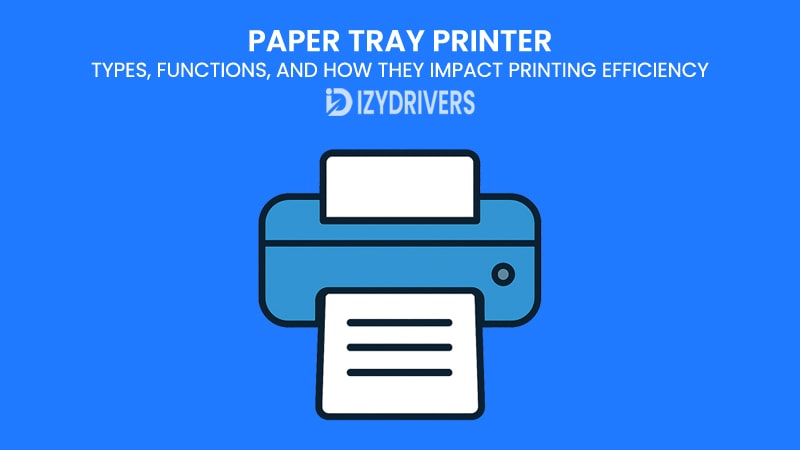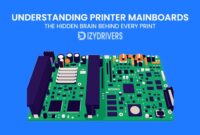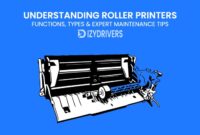Most people only pay attention to their printer when something goes wrong — like when a document comes out skewed or a paper jam ruins an urgent print job. Yet one small component plays a bigger role in preventing those problems than many realize: the Paper Tray Printer.
At first glance, a paper tray seems like nothing more than a plastic drawer for holding sheets of paper. But in reality, it shapes the entire printing experience. A well-designed Paper Tray Printer keeps paper aligned, feeds it into the machine correctly, and organizes the printed pages neatly on the way out. Whether you’re printing a single-page report at home or handling hundreds of documents in an office, this seemingly simple part affects speed, quality, and reliability.
Many people overlook how much the Paper Tray Printer contributes to efficiency. A loose tray or poorly aligned stack can cause jams, smudges, or pages printed in the wrong order. On the other hand, the right tray setup ensures that your printer works smoothly, saving time and reducing waste.
In this article, we’ll break down the types and functions of a Paper Tray Printer, explore how it impacts printing performance, and share insights that will help both home users and businesses choose the right printer for their needs. Let’s start with the basics — understanding exactly what a paper tray does and why it matters more than most people think.
What Is a Paper Tray Printer?
Before looking at different types or functions, it’s worth understanding what a Paper Tray Printer actually is. For most people, the paper tray seems like a simple accessory — something you slide open to load paper, then forget about until you run out of sheets. But this single component is where the printing process begins, and if it doesn’t work properly, everything else falls apart.
A Paper Tray Printer has one main job: managing paper before and after printing. The input tray holds blank sheets in a neat stack, ensuring each page is fed smoothly into the printer. The output tray collects the printed documents so they don’t fall to the floor or get mixed up. This simple cycle — paper in, paper out — depends entirely on how well the paper tray does its job.
Modern printers often go beyond a single paper tray. Many come with multiple trays designed for different purposes: one for standard letter-size sheets, another for legal-size paper, and sometimes a multipurpose tray for envelopes or special media. The Paper Tray Printer in these machines is designed not only for convenience but also for efficiency, reducing the need to reload paper constantly during big print jobs.
The role of the Paper Tray Printer becomes even clearer when something goes wrong. A paper jam, a crooked print, or pages coming out in the wrong order can usually be traced back to the tray — whether it’s misaligned paper, overloaded sheets, or the wrong paper type selected in the settings. This is why understanding the paper tray isn’t just for technicians or printer geeks. It matters to anyone who wants smooth, problem-free printing.
Functions of a Paper Tray Printer
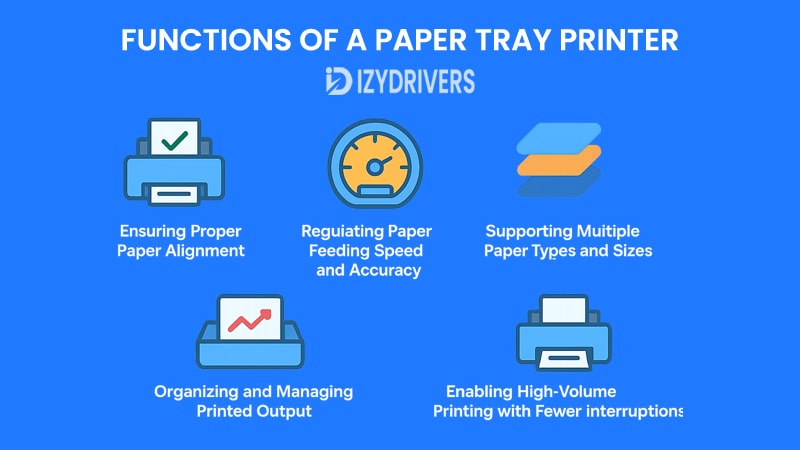
The Paper Tray Printer might look simple, but its role goes far beyond just holding sheets of paper. It connects every stage of the printing process — from loading blank pages to organizing finished documents. Below are the key functions that show why this small component has such a big impact on efficiency and print quality.
Ensuring Proper Paper Alignment
One of the most critical tasks of a Paper Tray Printer is keeping each sheet perfectly aligned before it enters the printing mechanism. When paper isn’t positioned correctly, you might see text that slants across the page, images cut off at the edges, or entire sections printed outside the margins.
Modern Paper Tray Printers use guides, adjustable sliders, and sometimes even sensors to keep paper perfectly in place. This alignment ensures that when the printer rollers pull in a sheet, it moves through the printer in a straight, consistent path. The result? Professional-looking documents without wasting paper or ink.
Regulating Paper Feeding Speed and Accuracy
Another vital function is controlling how each sheet moves into the printer. A Paper Tray Printer works together with the machine’s feed rollers and internal sensors to ensure that only one page enters at a time.
Without this control, two things can happen: either two pages stick together and enter the printer at once, creating a misfeed, or the paper doesn’t feed at all, leading to a jam. Both problems waste time and resources. By regulating feeding speed and accuracy, the Paper Tray Printer keeps the printing process running smoothly, even during high-volume jobs.
Supporting Multiple Paper Types and Sizes
Today’s printing needs go beyond standard letter-size sheets. From legal documents and glossy photos to labels and envelopes, different tasks require different media. A versatile Paper Tray Printer supports multiple paper sizes and thicknesses, letting users switch from one job to another without constant reloading.
Some advanced printers feature multipurpose trays designed specifically for unusual media. Instead of running special pages through the main tray — which might not handle them well — the multipurpose tray ensures proper feeding, alignment, and print quality for non-standard jobs.
Organizing and Managing Printed Output
Once a page comes out of the printer, the job isn’t done yet. Without an output tray, printed pages could scatter across the floor or get mixed up, especially during multi-page jobs. The Paper Tray Printer plays a role here, too, catching each sheet in the right order so documents stay organized.
For long reports, school projects, or business proposals, this matters more than most people realize. Reassembling pages after they come out in the wrong sequence wastes time and creates unnecessary frustration.
Enabling High-Volume Printing with Fewer Interruptions
Finally, the Paper Tray Printer determines how often you need to reload paper. A small tray might be fine for home use, where you only print a few pages at a time. But in busy offices, a large-capacity tray can hold hundreds of sheets, letting staff run big print jobs without constant interruptions.
Some high-end printers even offer multiple paper trays, so one can hold standard paper while another handles letterhead or special forms. This setup increases efficiency by reducing downtime and manual intervention.
Key Functions of a Paper Tray Printer for Printing Efficiency
| Function of Paper Tray Printer | What It Does | Why It Matters for Printing Efficiency |
|---|---|---|
| Proper Paper Alignment | Keeps paper straight and correctly positioned | Prevents skewed prints, reduces paper waste |
| Controlled Paper Feeding | Ensures one sheet at a time enters the printer | Avoids jams, double-feeding, and printing errors |
| Multi-Size & Multi-Media Support | Handles different paper sizes and types (e.g., envelopes) | Increases flexibility for home and business use |
| Organized Output Management | Collects printed pages in correct order | Saves time on sorting, keeps documents professional |
| High-Capacity Printing Support | Holds large stacks of paper for big print jobs | Minimizes interruptions, improves office productivity |
Types of Paper Trays in Printers
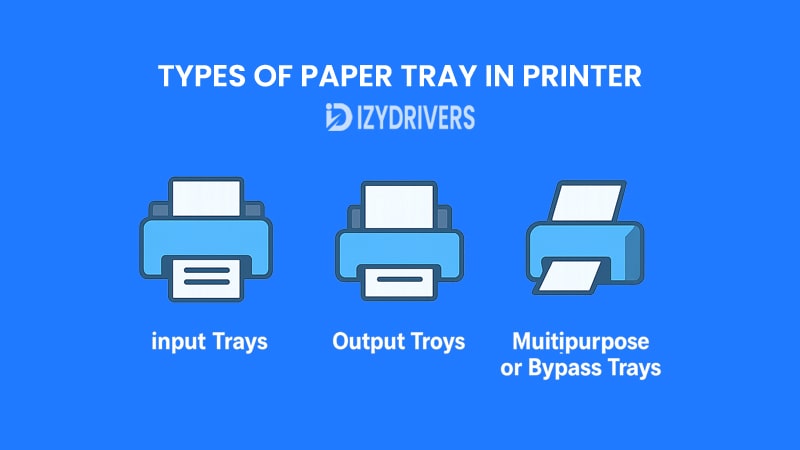
When people hear the term Paper Tray Printer, they often imagine a single, simple compartment where paper sits before printing. In reality, modern printers usually have several tray types designed for different tasks. Understanding the differences helps users choose the right printer and avoid common problems like jams, misfeeds, or constant reloading.
The three most common types found in most Paper Tray Printers are the Input Tray, the Output Tray, and the Multipurpose or Bypass Tray. Each plays a unique role in how paper moves through the printer. Let’s break them down one by one.
Input Trays
The Input Tray is where every print job begins. This is the part of the Paper Tray Printer that holds blank sheets before they’re fed into the printing mechanism. Most home printers have one input tray, usually designed for standard letter-size paper. Office printers, on the other hand, often feature multiple input trays that can handle different paper sizes or larger capacities.
One important feature of input trays is adjustability. Sliding guides help keep paper aligned so each sheet feeds correctly. If you’ve ever had pages print at an angle, there’s a good chance the paper wasn’t sitting properly in the input tray. High-end printers even have sensors that detect paper size and thickness automatically, reducing setup errors and improving workflow.
Another factor is capacity. A small home printer might hold 50 to 100 sheets, while an office Paper Tray Printer could store 500 sheets or more. The bigger the tray, the less often you have to stop and reload, which is especially important for businesses with heavy printing needs.
Output Trays
Once printing starts, pages move from the input tray through the printer mechanism and finally land in the Output Tray. This part of the Paper Tray Printer might not seem as critical as the input tray, but it plays a major role in keeping documents organized.
Imagine printing a 50-page report without an output tray. The pages would scatter across your desk or, worse, onto the floor. With an output tray, everything stays in order, making it easy to pick up the entire document in sequence. Some advanced printers even have output trays with sorting features, stacking different print jobs separately to avoid mixing pages from multiple users.
For large offices, output trays with higher capacity help reduce interruptions. Instead of clearing out the tray after every few pages, staff can print longer documents without stopping to organize the results.
Multipurpose or Bypass Trays
The third type is the Multipurpose Tray, sometimes called a bypass tray. Unlike the main input tray, this one is designed for special tasks: printing on envelopes, labels, card stock, or other media that standard trays might struggle to handle.
A Paper Tray Printer with a multipurpose tray gives users flexibility. Instead of removing standard paper from the main tray to load a single envelope or specialty sheet, you can place it in the bypass tray and print directly. This saves time and prevents errors, especially in offices where different print jobs run back to back.
Some printers also use bypass trays for manual feeding, letting you load one sheet at a time when precision is needed — for example, printing on pre-printed letterheads or custom stationery.
Types of Paper Trays in Printers and Their Functions
| Type of Paper Tray Printer | Main Function | Typical Use Cases | Capacity Range |
|---|---|---|---|
| Input Tray | Holds blank sheets before printing begins | Standard documents, office printing, schoolwork | 50–500+ sheets depending on model |
| Output Tray | Collects printed pages in correct order | Reports, assignments, multi-page documents | 30–200+ sheets |
| Multipurpose / Bypass Tray | Handles special media like envelopes, labels, or card stock | Custom stationery, labels, one-off specialty prints | Single sheet or small stacks |
How Paper Tray Printers Impact Printing Efficiency
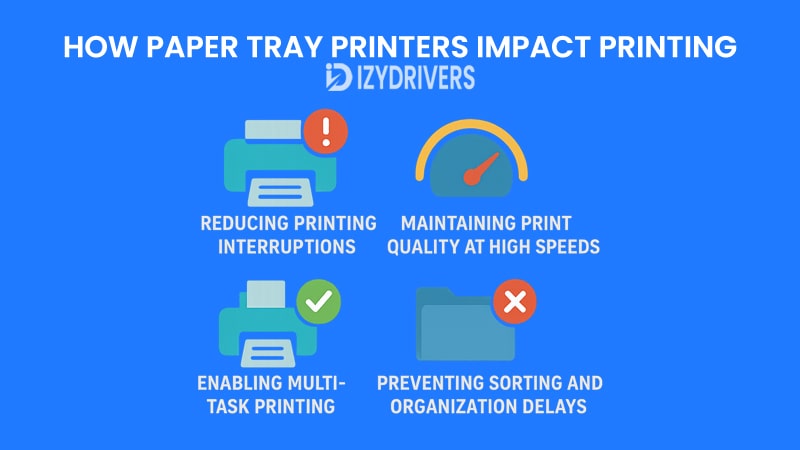
When it comes to workplace productivity or even simple home printing, people often think speed comes only from the printer’s engine or processor. In reality, the Paper Tray Printer plays a much bigger role than most realize. The way paper enters, moves through, and exits the machine directly affects how quickly and smoothly print jobs get done. Let’s break down the main factors that link paper trays to printing efficiency.
Reducing Printing Interruptions
One of the biggest time-wasters in any printing setup is constantly having to stop and reload paper. If a Paper Tray Printer has only a small input tray, users end up refilling it every few pages, especially when printing long reports or multi-user jobs.
With a larger capacity input tray, printing becomes more seamless. Employees can start a job and walk away, confident that the printer won’t stop halfway through because it ran out of paper. This might sound like a small convenience, but in busy offices where multiple people share the same printer, it prevents bottlenecks and keeps workflows running smoothly.
Maintaining Print Quality at High Speeds
Efficiency isn’t just about speed — quality matters too. A Paper Tray Printer ensures that each sheet feeds into the printer evenly, even when printing at higher speeds. Without proper feeding control, pages can skew or jam, leading to wasted paper and reprints.
By keeping paper aligned and moving correctly, the tray indirectly supports the printer’s ability to maintain professional-quality output at faster rates. That means businesses don’t have to choose between speed and accuracy — they can have both with the right setup.
Enabling Multi-Task Printing
Many modern Paper Tray Printers come with multiple input trays, each holding different paper types or sizes. For example, one tray might store standard A4 sheets, while another holds company letterhead or pre-printed forms. This setup allows printers to switch between tasks automatically without human intervention.
Instead of stopping the job to reload special paper manually, the printer simply pulls from the correct tray when needed. This multi-tray design is especially useful in offices where diverse printing needs happen back-to-back, saving significant time in the long run.
Preventing Sorting and Organization Delays
Finally, efficiency doesn’t end when printing stops. The Output Tray organizes pages in the right order, preventing the chaos of sorting mixed or out-of-sequence documents. Without it, staff would waste time shuffling papers, which becomes a major headache in large printing jobs.
Some high-end printers even include multiple output trays for separating print jobs automatically. This way, documents for different departments or users stay organized without extra steps.
Material and Design Innovations in Paper Tray Printers
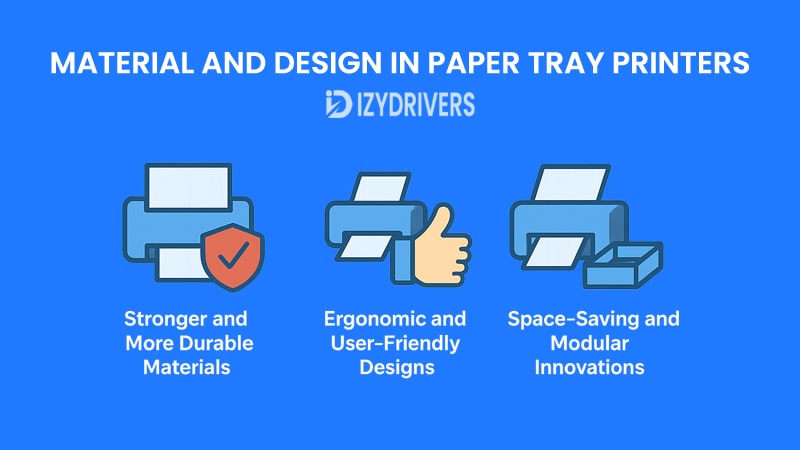
The humble Paper Tray Printer has come a long way from the simple plastic bins found in early desktop printers. As printing demands have grown, so have expectations for durability, functionality, and even aesthetics. Modern paper trays now feature innovations in both materials and design that improve user experience, extend printer life, and boost printing efficiency.
Stronger and More Durable Materials
Older printers often used lightweight plastic trays that cracked under pressure or after years of frequent use. Today, many Paper Tray Printers feature reinforced plastics or even metal components in high-end models. These materials not only resist wear and tear but also prevent warping, which can lead to paper misalignment and feeding issues.
Some manufacturers now incorporate composite materials that combine strength with lighter weight. This design choice ensures the tray can handle large paper capacities without adding unnecessary bulk to the printer itself. As a result, users benefit from trays that last longer and require less maintenance over the printer’s lifetime.
Ergonomic and User-Friendly Designs
Another major innovation lies in tray ergonomics. Modern Paper Tray Printers often feature adjustable sliders with smooth mechanisms, making it easy to switch between paper sizes without struggling to lock components into place.
For example, instead of manually aligning each edge, some trays have guided notches or automatic width detection, ensuring sheets stay perfectly positioned every time. This design reduces user error, improves print alignment, and saves time during high-volume printing tasks.
Some premium models even include transparent or partially open trays so users can quickly check paper levels without opening the entire printer. These small touches may seem minor but make everyday printing significantly more efficient.
Space-Saving and Modular Innovations
In small offices or home setups where desk space is limited, the Paper Tray Printer has evolved to be more compact without sacrificing capacity. Stackable or modular tray designs let users expand capacity when needed without replacing the entire printer.
For instance, an office might start with a standard single-tray setup but later add an extra tray module as printing needs grow. This modular approach saves costs while giving businesses flexibility to scale their printing infrastructure over time.
Comparing Single vs. Multiple Paper Trays
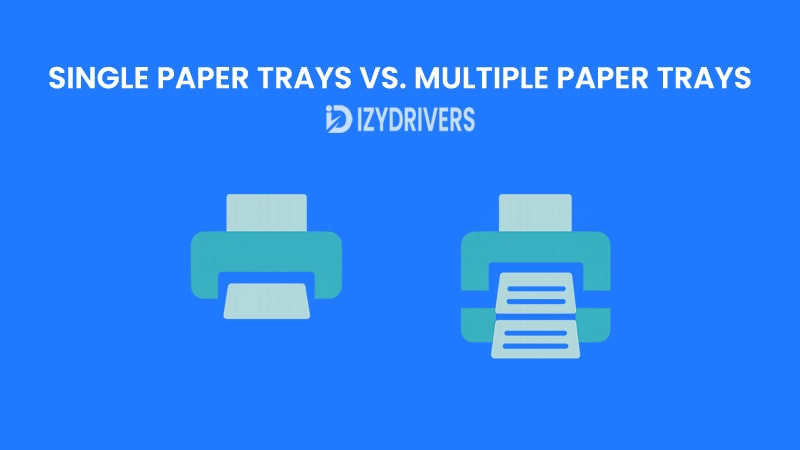
Not every printer comes with the same paper tray setup. Some have just one simple tray for all printing tasks, while others offer two, three, or even more. Understanding the differences between single-tray and multi-tray Paper Tray Printers helps users choose the right model based on their actual needs rather than just price or brand reputation.
Single Paper Tray Printers: Simplicity and Affordability
Single-tray Paper Tray Printers are common in homes, small businesses, and personal offices. They keep things simple: one tray holds all the paper, and you load whatever size or type you need before printing.
For light printing tasks — like school assignments, invoices, or everyday documents — a single tray usually works fine. It keeps the printer design compact, affordable, and easy to maintain. The downside, however, comes when you need to print on different paper sizes or switch between standard sheets and specialty media. Every time the paper type changes, you have to manually reload the tray, which can interrupt workflows.
Multiple Paper Tray Printers: Versatility and Efficiency
Multi-tray Paper Tray Printers are designed for speed, flexibility, and high-volume use. Offices that frequently print on various paper sizes — such as letterhead, forms, or labels — benefit greatly from having dedicated trays for each media type.
With multiple trays, you don’t need to stop printing just to swap paper. The printer automatically selects the correct tray based on the job settings, saving time and reducing the risk of errors. This feature becomes especially valuable in shared work environments where several users send different print jobs throughout the day.
Some advanced models even allow you to assign priorities to trays, so when one runs out, the printer automatically switches to another without pausing the job.
Choosing Between Single and Multiple Trays
The decision between single and multiple paper trays often depends on volume, variety, and convenience. Homes and small offices with minimal printing needs usually stick to single-tray setups for cost efficiency. Larger businesses or schools, however, benefit from the time-saving features of multi-tray printers, especially when handling complex or frequent print jobs.
Conclusion
The Paper Tray Printer might look like a small part of a printer, but its role in print quality, efficiency, and user convenience is bigger than most people realize. From keeping pages aligned to supporting high-volume printing and handling multiple paper types, every feature of the paper tray impacts the overall printing experience.
Whether you’re choosing a simple single-tray printer for home use or a multi-tray model for a busy office, understanding the different types, functions, and design innovations helps you make a smarter investment. As printing technology continues to evolve, the Paper Tray Printer will likely become even more versatile, efficient, and user-friendly — ensuring that printing stays hassle-free no matter the task.
FAQs About Paper Tray Printer
What is the main function of a Paper Tray Printer?
A Paper Tray Printer holds, feeds, and organizes paper before, during, and after printing. It ensures proper alignment, prevents jams, and keeps output in order.
Are multiple paper trays worth it for small offices?
Yes, if you often print on different paper sizes or run high-volume jobs. Multi-tray printers save time by eliminating manual paper swapping.
How does tray capacity affect printing efficiency?
Larger tray capacity reduces interruptions. You can run bigger print jobs without stopping frequently to reload paper.
Can paper tray design impact print quality?
Absolutely. Better alignment systems, smooth feeding mechanisms, and durable materials all help maintain consistent print quality and reduce errors.
What future innovations are expected for Paper Tray Printers?
Upcoming features may include smart sensors for paper level detection, eco-friendly materials, modular tray expansions, and even AI-powered feeding systems for maximum efficiency.

